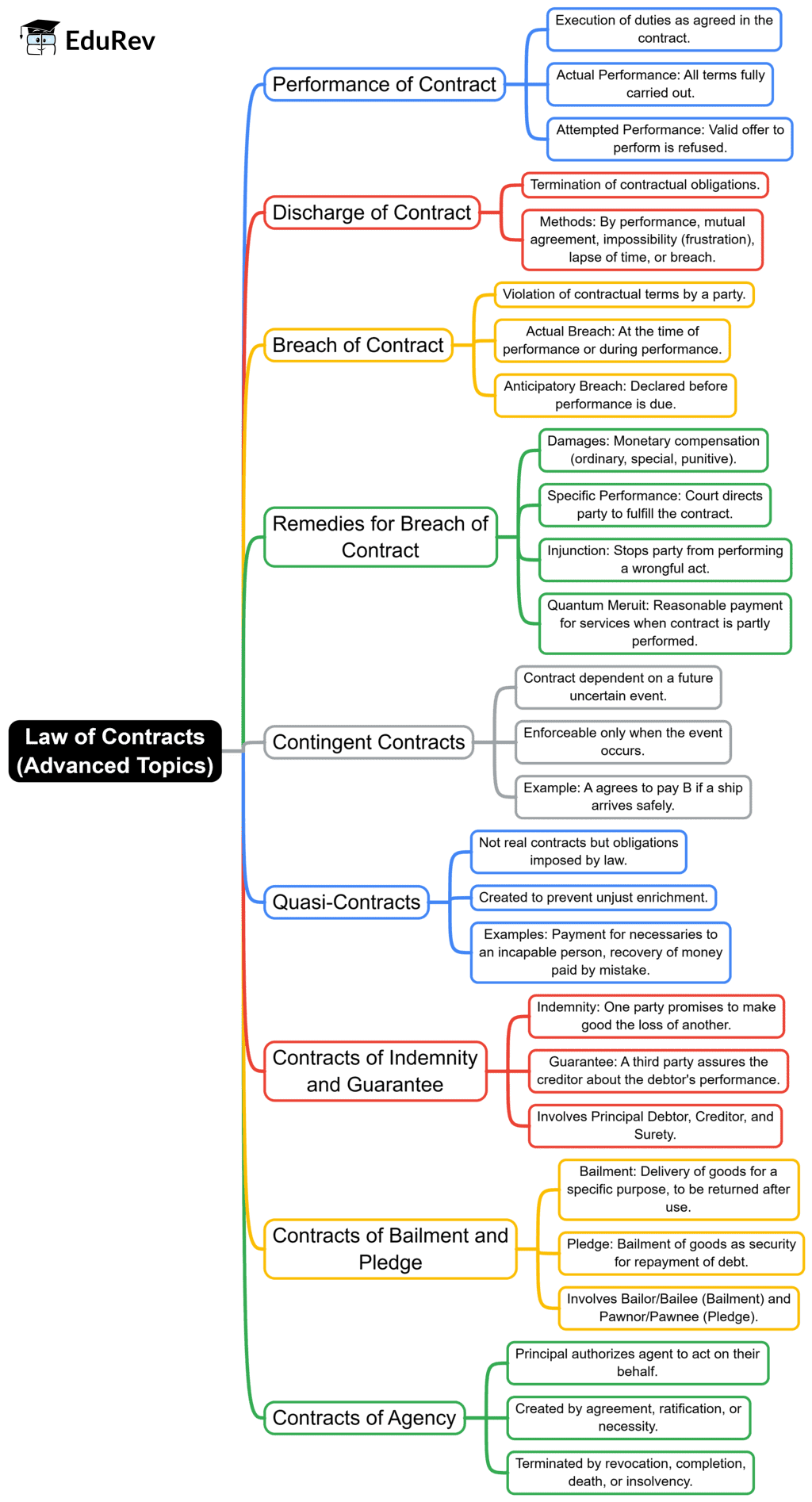CLAT Exam > CLAT Notes > Legal Reasoning for CLAT > Mind Map: Contract Law- 2
Mind Map: Contract Law- 2 | Legal Reasoning for CLAT PDF Download

The document Mind Map: Contract Law- 2 | Legal Reasoning for CLAT is a part of the CLAT Course Legal Reasoning for CLAT.
All you need of CLAT at this link: CLAT
|
63 videos|172 docs|37 tests
|
FAQs on Mind Map: Contract Law- 2 - Legal Reasoning for CLAT
| 1. What are the essential elements required for a valid contract in contract law? |  |
Ans. The essential elements required for a valid contract include offer, acceptance, consideration, legal capacity, and lawful object. The offer must be clear and definite, while acceptance must be communicated to the offeror. Consideration refers to something of value exchanged between the parties. Both parties must have the legal capacity to enter into a contract, and the purpose of the contract must be lawful.
| 2. How does the principle of consideration work in contract law? |  |
Ans. Consideration in contract law refers to something of value that is exchanged between the parties involved in a contract. It can be a promise, an act, or forbearance. For a contract to be enforceable, there must be consideration that is sufficient but need not be adequate. This means that the law does not require the consideration to be equal in value, but it must be something of value in the eyes of the law.
| 3. What is the difference between void and voidable contracts? |  |
Ans. A void contract is one that is not legally enforceable from the moment it is created, meaning it has no legal effect. In contrast, a voidable contract is valid and enforceable unless the party with the option to void it chooses to do so. A voidable contract may arise due to factors like misrepresentation, undue influence, or coercion, allowing the affected party to affirm or rescind the contract.
| 4. What are the remedies available for breach of contract? |  |
Ans. The remedies for breach of contract typically include damages, specific performance, and rescission. Damages are monetary compensation for losses incurred due to the breach. Specific performance is an order from the court requiring the breaching party to fulfill their contractual obligations. Rescission cancels the contract and restores the parties to their pre-contractual positions.
| 5. How can a contract be terminated under contract law? |  |
Ans. A contract can be terminated in several ways, including mutual agreement, completion of the contract terms, breach by one party, and operation of law (such as the expiration of a contract). Additionally, a party may have the right to terminate a contract if there is a material breach or if the other party fails to perform their obligations as agreed.
Related Searches
















